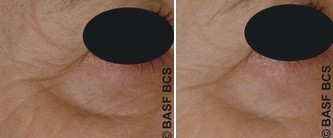Scientists develop appetite for escargot due to its skin regeneration properties
Published in the International Journal of Cosmetic Science, the research was based on the regenerative properties found in escargot, the French word for snail, due to its promoting effect on skin cell migration, proliferation and survival.
Regenerative properties of skin decrease with age and, thus, the search for substances that minimise cutaneous ageing has increased in the last few years.
Natural product
The scientists who took part in the Spain-based study explain that secretion of the SCA is a natural product that bears regenerative properties when applied topically.
Therefore, the researchers studied the in vitro effects of SCA on cell proliferation and migration, as well as on cell-cell (E-Cadherin, beta-catenin) and cell-substrate (vinculin, beta1-integrin) adhesion proteins expression.
For this, they used a human keratinocyte cell line (HaCaT cells) and primary dermal fibroblasts (HF), derived from the dermis of normal adult skin.
Different tests for different needs
To test cells proliferation, a colorimetric assay was performed, in which the course of the reaction is followed by measuring a change in how much light the assay solution absorbs. If this light is in the visible region a change in the colour of the assay is clearly observed.
Cell migration was also studied using wound healing assays, whereas the study notes that Western Blot and immunofluorescence microscopy were carried out to test the expression of different cell adhesion protein.
The tests found that SCA promotes proliferation and migration of HaCaT cells in a time- and dose-dependent manner.
Moreover, treatment with SCA was found to increase the migratory behaviour and the expression of adhesion molecules in both HaCaT and HF, as well as improving cell survival.
___________________________________
Int J Cosmet Sci. 2011 Dec 15. doi: 10.1111/j.1468-2494.2011.00699.x.
A secretion of the mollusk Cryptomphalus aspersa promotes proliferation, migration and survival of keratinocytes and dermal fibroblasts in vitro.
Iglesias-de la Cruz MC, Sanz-Rodríguez F, Zamarrón A, Reyes E, Carrasco E, González S, Juarranz A.
Source
Departamento de Biología, Facultad de Ciencias, Universidad Autónoma de Madrid, Madrid, Spain. Industrial Farmacéutica Cantabria, Madrid, Spain. Dermatology Service, Memorial Sloan-Kettering Cancer Center, New York, N.Y., USA. Dermatology Group, O'Donnell 41, Madrid, Spain.



















